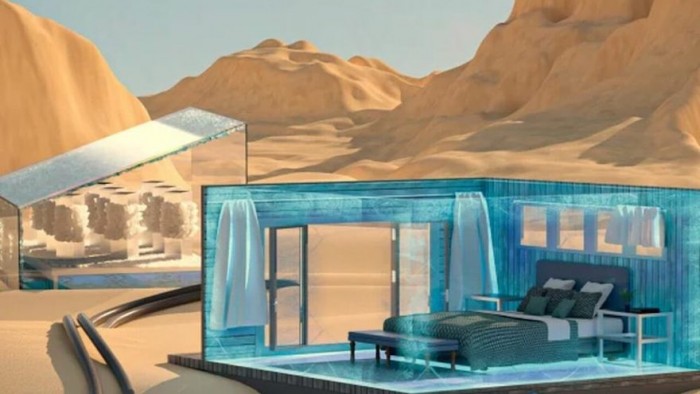A new low-cost scientific system designed by Peng Wang, an environmental science and engineering professor at Saudi Arabia’s , looks set to provide cooling power for remote regions or off-grid communities.
Wang’s electricity-free cooling mechanism is geared towards those living in uncomfortably hot and arid regions that also lack reliable power for air-conditioning. It relies on the basic cooling effect created when salt crystals are dissolved in water.
After carrying out experiments with numerous different types of salt, Wang’s team settled on ammonium nitrate for three reasons: It has a high solubility, effective cooling power, and is produced inexpensively (generally for use in fertilisers). The simple cooling process involves melting the salt gradually in a metal cup that has been placed inside a polystyrene foam box and witnessing its temperature gradually falling from room temperature to a chilly 3.6°C – and remaining below 10°C for eight hours and under 15°C for over 15 hours.
Recovering the salt is easy. The researchers place the liquid solution in a tall container made of an absorbent material, and witness the ammonium nitrate salt crystals appearing on the container’s outer wall once the solution has evaporated.
Over and above the human comfort aspect and that of storing both food and medicine at their optimal temperatures, is the need to take note of important pointers arising from COP26 – specifically, reducing our global reliance on electricity. Alarmingly, energy demand from air conditioners will triple by 2050, according to International Energy Agency research – and those based in sunny, searingly hot regions without reliable power will likely suffer health, food and medicine storage issues as a result.
Although in its early stages, Wang’s concept could offer a first-rate solution for remote communities without access to electricity. Our World In Data says this affects as many as 940 million people or 13% of the world.Who would have thought a basic chemical reaction would offer such potential?
Ammonium nitrate would need to be used with safety protocols in mind, and it may not ever be sufficient to cool an entire building. But, it could certainly ease the stress of having food go off in the heat, for example, and can assist with medicine-storage requirements at remote clinics. It could even be used in conjunction with conventional electricity in less remote regions.
For those parts of the world where inhabitants must endure the combination of a lack of infrastructure and an endless supply of sunlight and heat, the cooling power of Wang’s eco-friendly system could be everything they’ve dreamed of.
Read more:
Cooling technology poised for revolution.
Credit: King Abdullah University of Science and Technology







